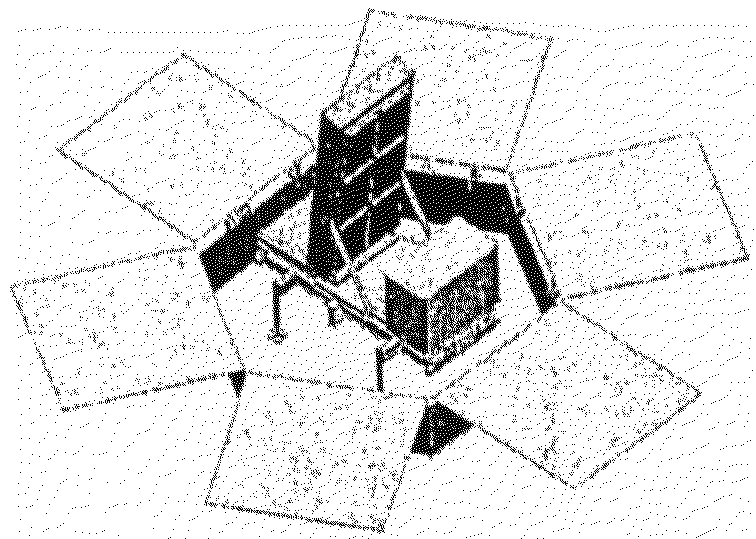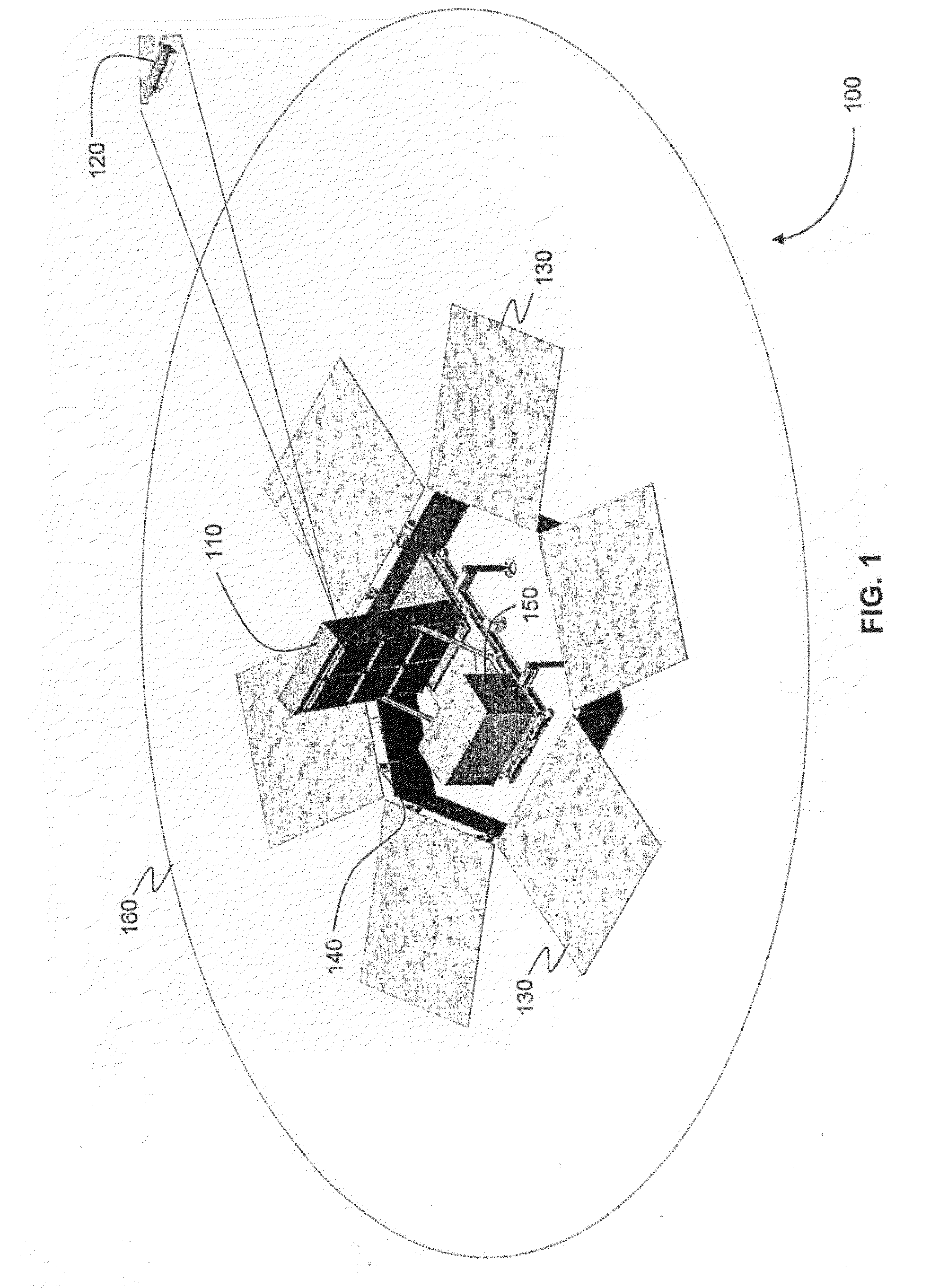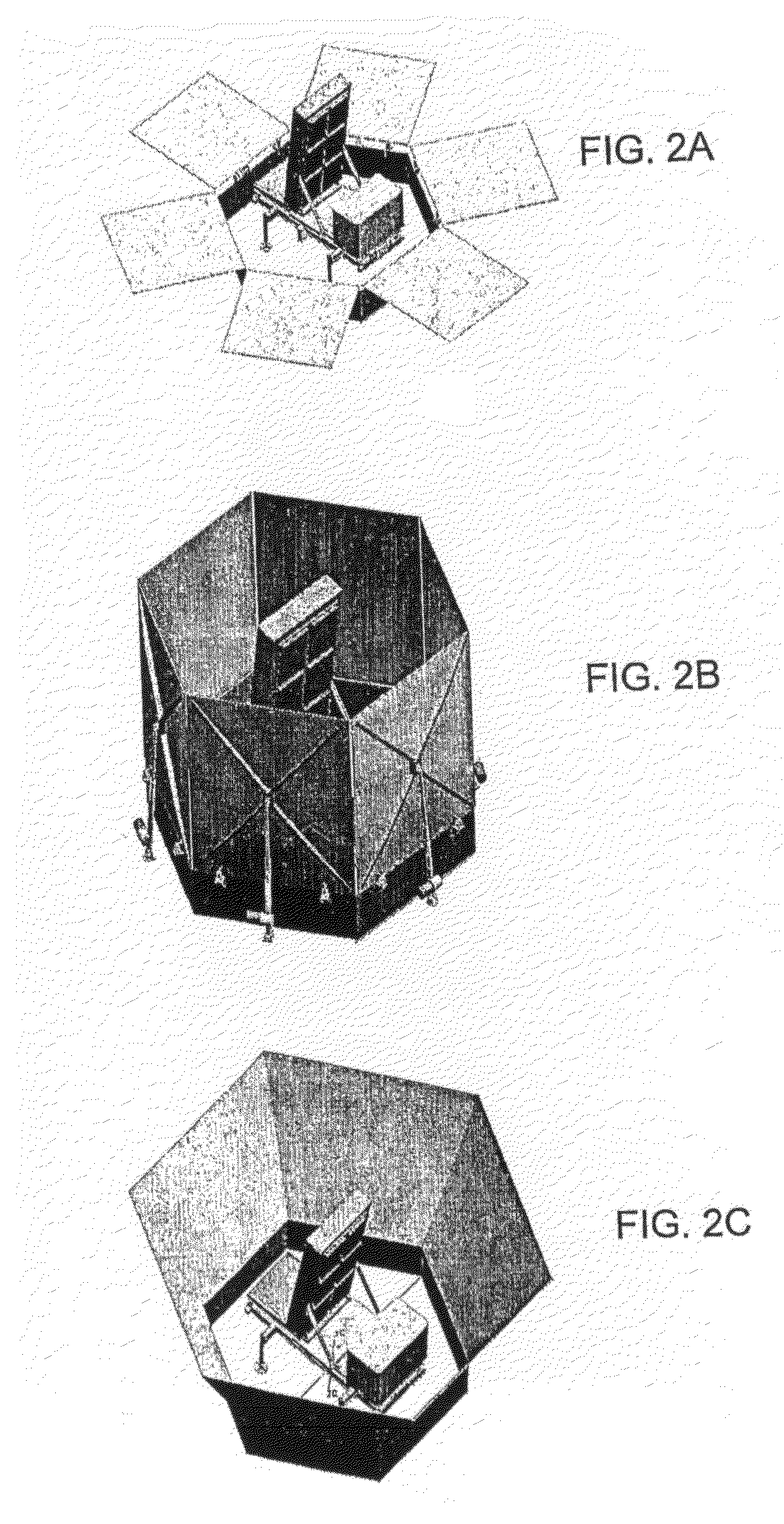Method and System for Deployed Shielding Against Ballistic Threats
a technology of ballistic threats and shielding methods, applied in shields, reactive armour, instruments, etc., can solve the problems of inability to protect the unit from direct hits of bombs, missiles, rockets, etc., and the survival and operability of the unit is affected, and traditional heavy-duty protective barrier shielding techniques are often not practical
- Summary
- Abstract
- Description
- Claims
- Application Information
AI Technical Summary
Benefits of technology
Problems solved by technology
Method used
Image
Examples
Embodiment Construction
[0022]FIG. 1 is a perspective view showing a system 100 in its regular operational state for protecting a radar unit 110 (constituting a sensor unit) against attack by potential aerial targets, such as the target 120. The system 100 includes a plurality of deployable shields 130 (constituting primary shields) that may be installed in the field so as to surround the radar unit 110 and, when deployed by respective actuators shown schematically as 140 controlled by a control unit 150, shield the radar unit 110 against incoming ballistic objects. FIG. 2a shows the shields in a stowed position whereby the radar unit is unprotected. FIG. 2b shows the shields in a fully erect position whereby the circumference of the radar unit is protected. FIG. 2c shows the shields in a partially erected position, which offers substantial protection to the radar unit, while allowing the shields to be returned more quickly to their first stowed position once no more threats are detected.
[0023]The shields ...
PUM
 Login to View More
Login to View More Abstract
Description
Claims
Application Information
 Login to View More
Login to View More - R&D
- Intellectual Property
- Life Sciences
- Materials
- Tech Scout
- Unparalleled Data Quality
- Higher Quality Content
- 60% Fewer Hallucinations
Browse by: Latest US Patents, China's latest patents, Technical Efficacy Thesaurus, Application Domain, Technology Topic, Popular Technical Reports.
© 2025 PatSnap. All rights reserved.Legal|Privacy policy|Modern Slavery Act Transparency Statement|Sitemap|About US| Contact US: help@patsnap.com



